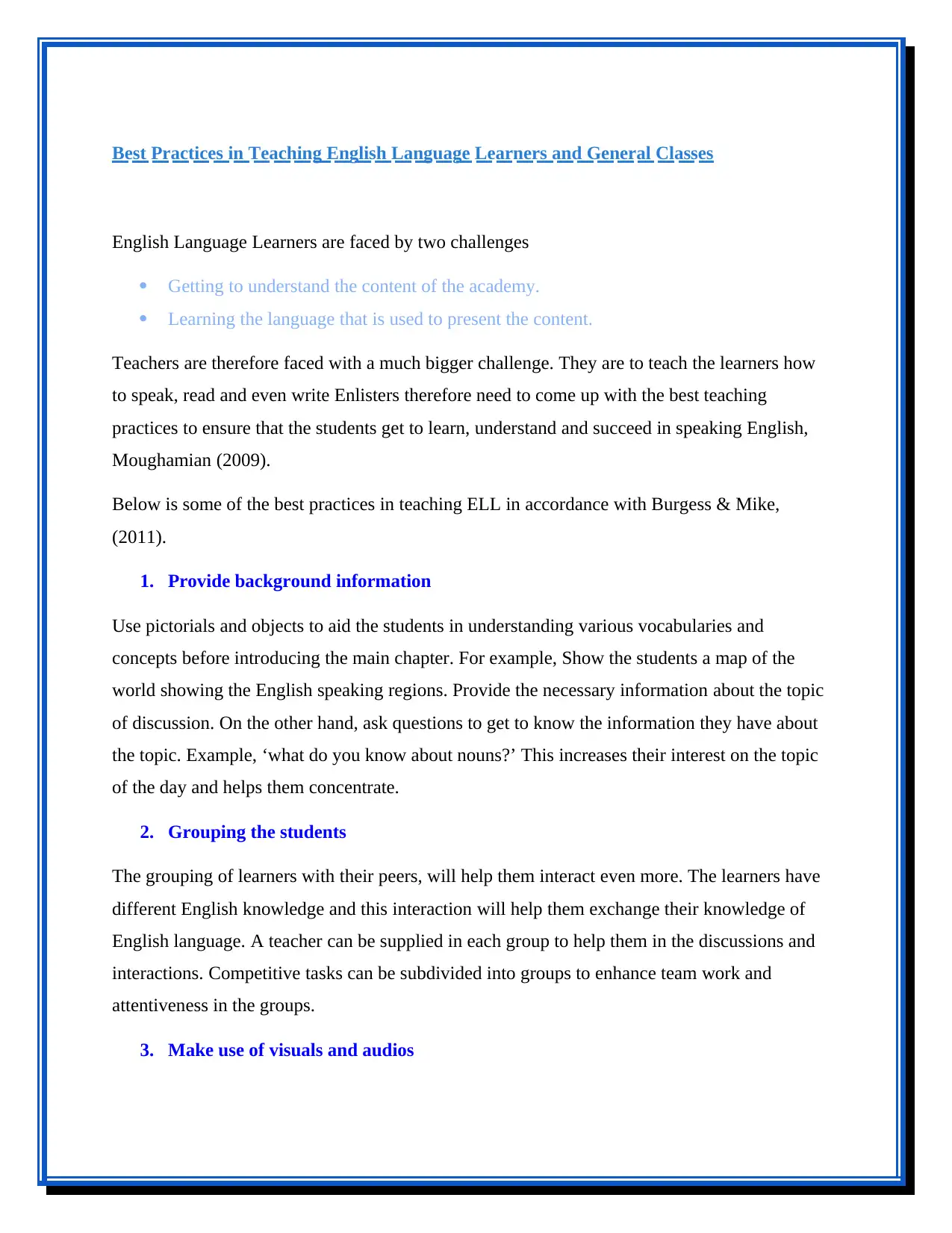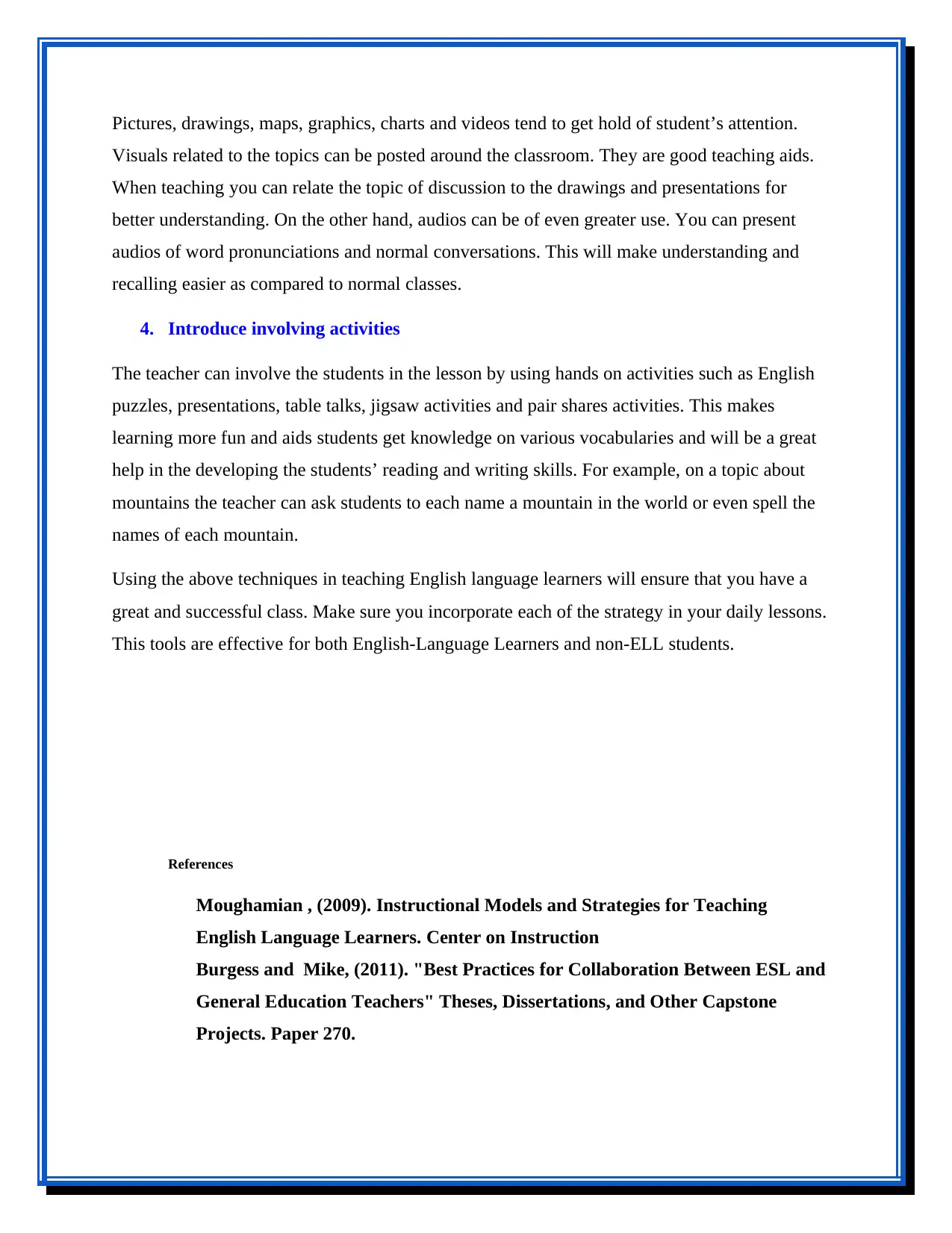Report on Best Practices in Teaching ELLs and General Classes
VerifiedAdded on 2023/06/12
|2
|582
|377
Report
AI Summary
This report outlines best practices for teaching English Language Learners (ELLs) and general classes. It emphasizes the challenges ELLs face in understanding content and learning the English language simultaneously. The suggested practices include providing background information using visuals and real objects, grouping students for peer interaction and knowledge exchange, utilizing visual and audio aids to enhance understanding and recall, and introducing involving activities like puzzles and presentations to make learning fun and develop reading and writing skills. The report references instructional models and strategies for teaching ELLs, highlighting the importance of incorporating these strategies in daily lessons for both ELL and non-ELL students. Desklib provides additional solved assignments and resources for students.
1 out of 2








![[object Object]](/_next/static/media/star-bottom.7253800d.svg)